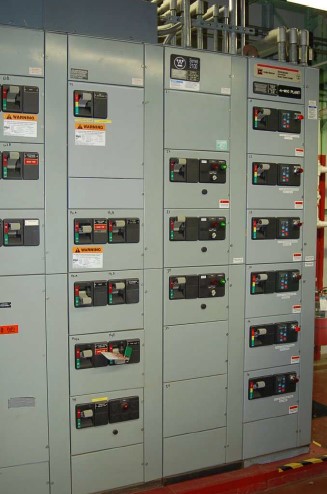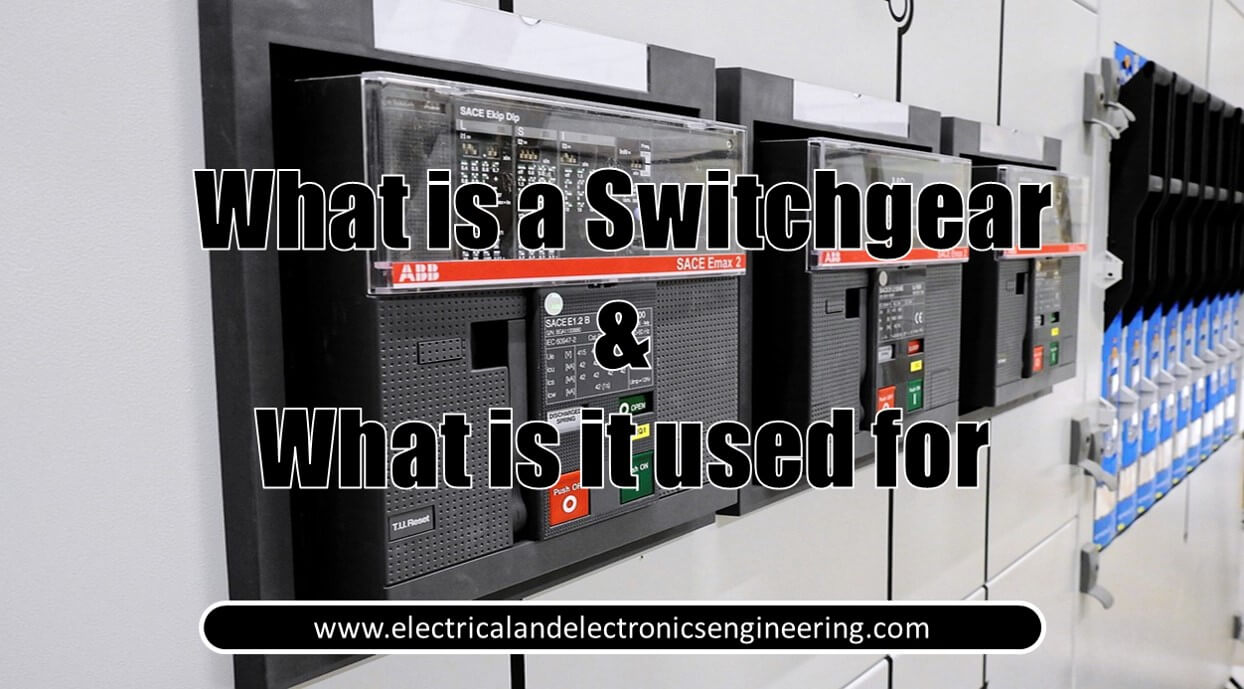In Electrical industries, the electric power is supplied to various loads from load centers which contain various protection and control devices. Power Engineers usually refer to this construction as Switchgear.
In this article, you’ll learn what is switchgear, its construction and why it is used.
What is a Switchgear and Why it is used
Switchgear is a combination of various protection and control devices such as circuit breakers, relays, control switches, metering equipment (ammeters, voltmeters, active/reactive power meters), indicator lights, buttons, and display panels.
A Switchgear is used to:
- Control electrical circuits
- Perform switching
- Protection devices that are connected to its circuit breakers
How it looks
The figure below displays an industrial switchgear assembly intended for control of 480 V- 3 phase motor circuits.

The circuit breakers in this switch-gear are auto-off- manual-on meaning they will turn off on fault detection, however they require to be manually switched on. Switchgears also contain auto-off auto-on breakers meaning they can be remotely controlled.
Switchgear can be classified into different types and classes.
A general distinction is metal enclosed and metal-clad.
As the name indicates metal enclosed assembly is totally enclosed from sides and top with a metal sheet containing protection, distribution, and control devices. The access is provided by doors or removable covers. Additionally, it contains ventilation and inspection windows. Metal-enclosed switchgear has bare bus and connections.
Metal-clad switchgear is metal-enclosed switchgear having its removable switches and interruption devices. Its major parts are completely enclosed by grounding metallic barriers and has automatic shutters that cover primary studs when elements are removed.
